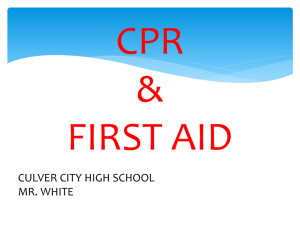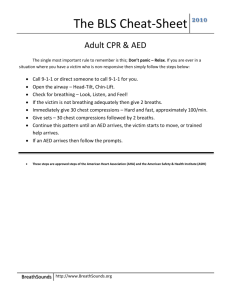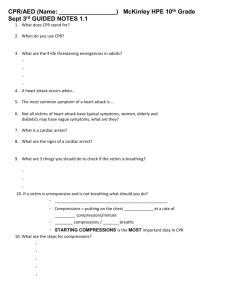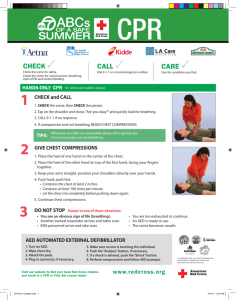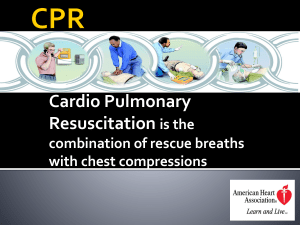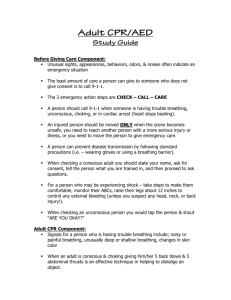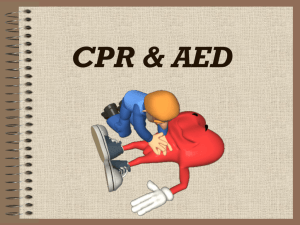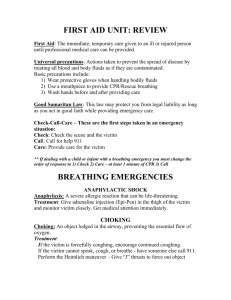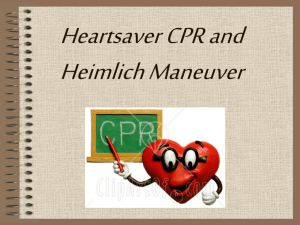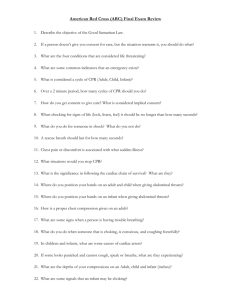CPR& AED Certification Exam Review
advertisement
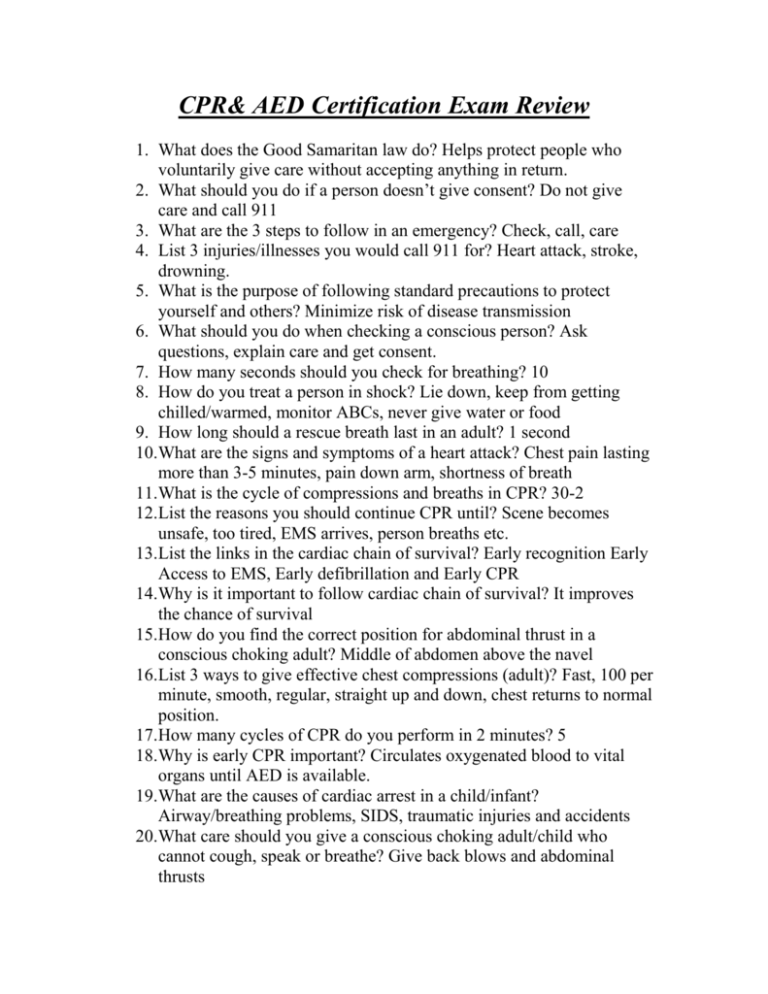
CPR& AED Certification Exam Review 1. What does the Good Samaritan law do? Helps protect people who voluntarily give care without accepting anything in return. 2. What should you do if a person doesn’t give consent? Do not give care and call 911 3. What are the 3 steps to follow in an emergency? Check, call, care 4. List 3 injuries/illnesses you would call 911 for? Heart attack, stroke, drowning. 5. What is the purpose of following standard precautions to protect yourself and others? Minimize risk of disease transmission 6. What should you do when checking a conscious person? Ask questions, explain care and get consent. 7. How many seconds should you check for breathing? 10 8. How do you treat a person in shock? Lie down, keep from getting chilled/warmed, monitor ABCs, never give water or food 9. How long should a rescue breath last in an adult? 1 second 10.What are the signs and symptoms of a heart attack? Chest pain lasting more than 3-5 minutes, pain down arm, shortness of breath 11.What is the cycle of compressions and breaths in CPR? 30-2 12.List the reasons you should continue CPR until? Scene becomes unsafe, too tired, EMS arrives, person breaths etc. 13.List the links in the cardiac chain of survival? Early recognition Early Access to EMS, Early defibrillation and Early CPR 14.Why is it important to follow cardiac chain of survival? It improves the chance of survival 15.How do you find the correct position for abdominal thrust in a conscious choking adult? Middle of abdomen above the navel 16.List 3 ways to give effective chest compressions (adult)? Fast, 100 per minute, smooth, regular, straight up and down, chest returns to normal position. 17.How many cycles of CPR do you perform in 2 minutes? 5 18.Why is early CPR important? Circulates oxygenated blood to vital organs until AED is available. 19.What are the causes of cardiac arrest in a child/infant? Airway/breathing problems, SIDS, traumatic injuries and accidents 20.What care should you give a conscious choking adult/child who cannot cough, speak or breathe? Give back blows and abdominal thrusts 21.List 5 signs and symptoms of someone having trouble breathing? Agitation, pale, ashen or blue skin color, slow rapid breathing, wheezing and high pitch breathing. 22.What is the hand position for compressions in Adult, child and infant? Middle of chest along breastbone. 23.What are the steps for caring for an unconscious choking victim? 30 compressions, look for object and 2 breaths. 24.How deep do you compress chest for Adult, child and infant? Adult & child 2 inches, infant 1 ½ inches. 25.Explain in detail what defibrillation is? Electrical shock that helps the heart resume an effective rhythm to a person in sudden cardiac arrest. 26.If during second analysis the AED says no shock advised, what should you do? Resume CPR until AED reanalyzes 27.What should you do before the AED analyzes the victim? Make sure no one is touching victim. 28. When preparing an AED for use, what is the first thing you should do? Turn it on. 29.Where should the pads be placed? Upper right chest and left side of chest 30.Why is it important to “stand clear” (2 reasons)? So you don’t get shocked and you don’t ruin the victim being analyzed. 31.What should you do if the pads touch one another? Place one on chest and one on back. 32. What should you do after you turned on the AED? Apply pads and analyze heart rhythm.
